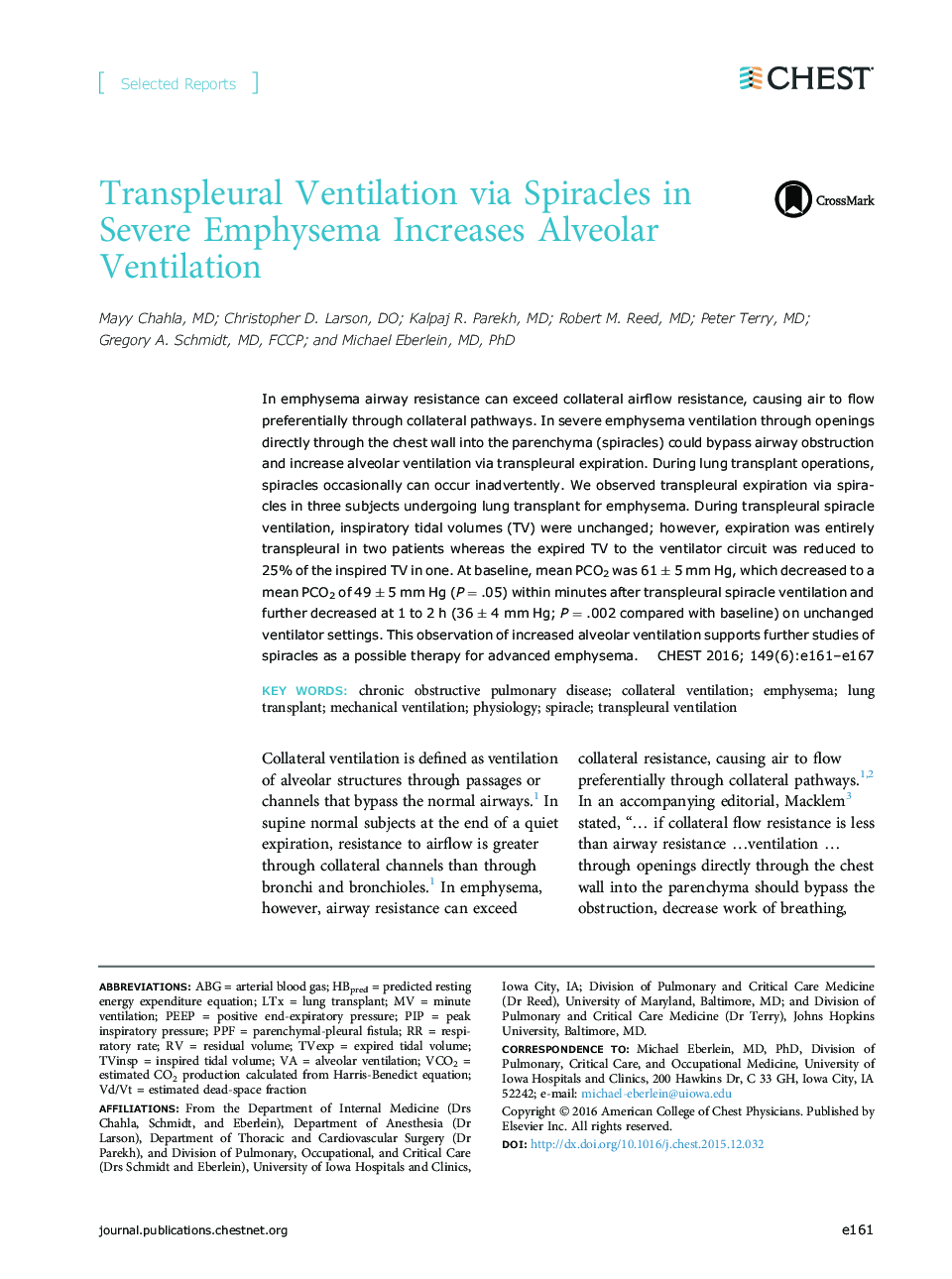| Article ID | Journal | Published Year | Pages | File Type |
|---|---|---|---|---|
| 5952458 | Chest | 2016 | 7 Pages |
Abstract
In emphysema airway resistance can exceed collateral airflow resistance, causing air to flow preferentially through collateral pathways. In severe emphysema ventilation through openings directly through the chest wall into the parenchyma (spiracles) could bypass airway obstruction and increase alveolar ventilation via transpleural expiration. During lung transplant operations, spiracles occasionally can occur inadvertently. We observed transpleural expiration via spiracles in three subjects undergoing lung transplant for emphysema. During transpleural spiracle ventilation, inspiratory tidal volumes (TV) were unchanged; however, expiration was entirely transpleural in two patients whereas the expired TV to the ventilator circuit was reduced to 25% of the inspired TV in one. At baseline, mean PCO2 was 61 ± 5 mm Hg, which decreased to a mean PCO2 of 49 ± 5 mm Hg (P = .05) within minutes after transpleural spiracle ventilation and further decreased at 1 to 2 h (36 ± 4 mm Hg; P = .002 compared with baseline) on unchanged ventilator settings. This observation of increased alveolar ventilation supports further studies of spiracles as a possible therapy for advanced emphysema.
Keywords
Related Topics
Health Sciences
Medicine and Dentistry
Cardiology and Cardiovascular Medicine
Authors
Mayy MD, Christopher D. DO, Kalpaj R. MD, Robert M. MD, Peter MD, Gregory A. MD, FCCP, Michael MD, PhD,
